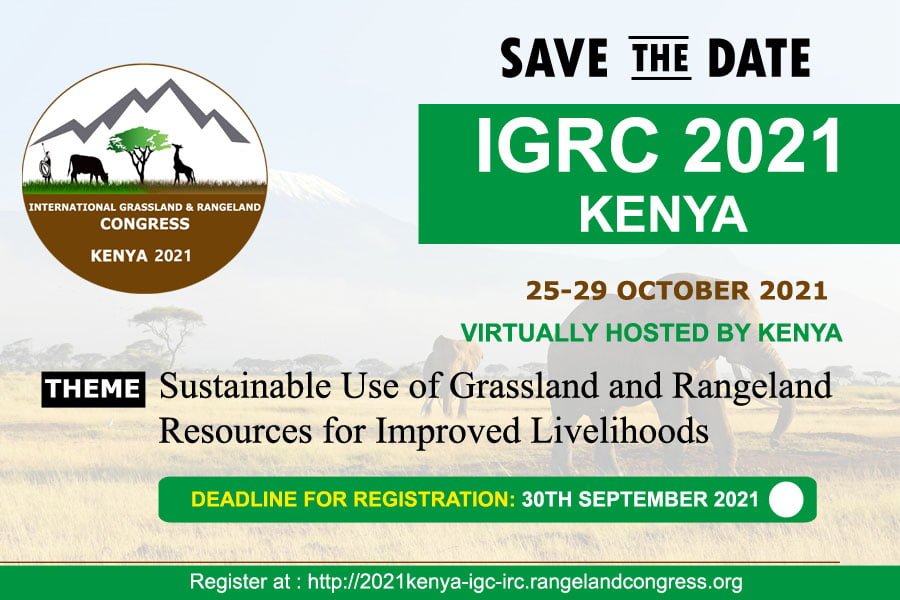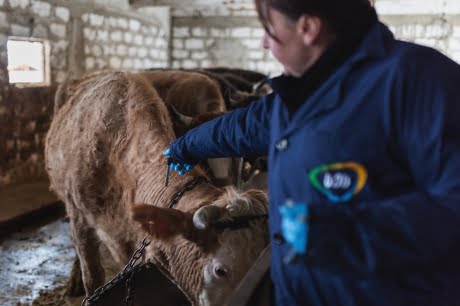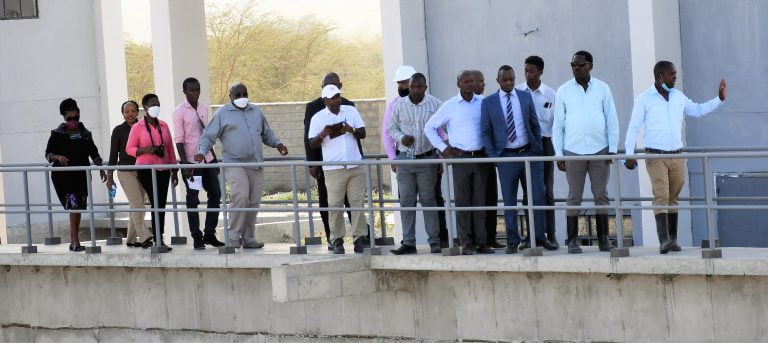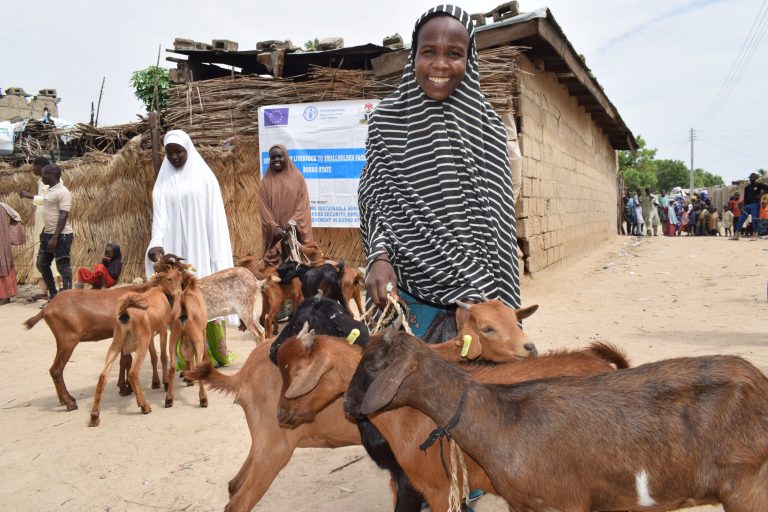Kenya will host the first joint 24th International Grassland Congress and 11th International Rangeland Congress in Nairobi. Due to Covid 19 challenges globally and following Government guidelines, the conference will be virtual.
The International Grassland and Rangeland Congress is hosted by the Ministry of Agriculture, Livestock, Fisheries and Irrigation, the Animal Production Society of Kenya and Kenya Agricultural and Livestock Research Organization together with support from the International Grassland and Rangeland Continuing Committee members.
“The hosting of the first-ever joint congress in Africa is significant, as the region offers diverse and unique tropical savannah ecosystems, which are home to some of the most economically important grasses in the world and spectacular wildlife. This momentous event is expected to bring together a large scientific community to deliberate on various advances made in the field of grassland and rangeland science and management,” says Harry Kimtai the Principal Secretary, Ministry of Agriculture, Livestock and Fisheries, State Department of Livestock.
The PS says the Organizing Committee has spared no effort to ensure that the joint IGC-IRC congress will be an occasion for the delegates to create sustainable interactive scientific and professional linkages and enjoy the cultural diversity and lasting memories of grassland and rangeland virtual tours.
In Kenya, rangelands occupy 80% of land and are home to about 10 million people. They support about 70% of the national livestock population and 90% of wildlife that is key to the tourism industry. Unfortunately, the productivity of these rangelands has been greatly affected by the frequent droughts and floods that characterize the impacts of climate change and variability.
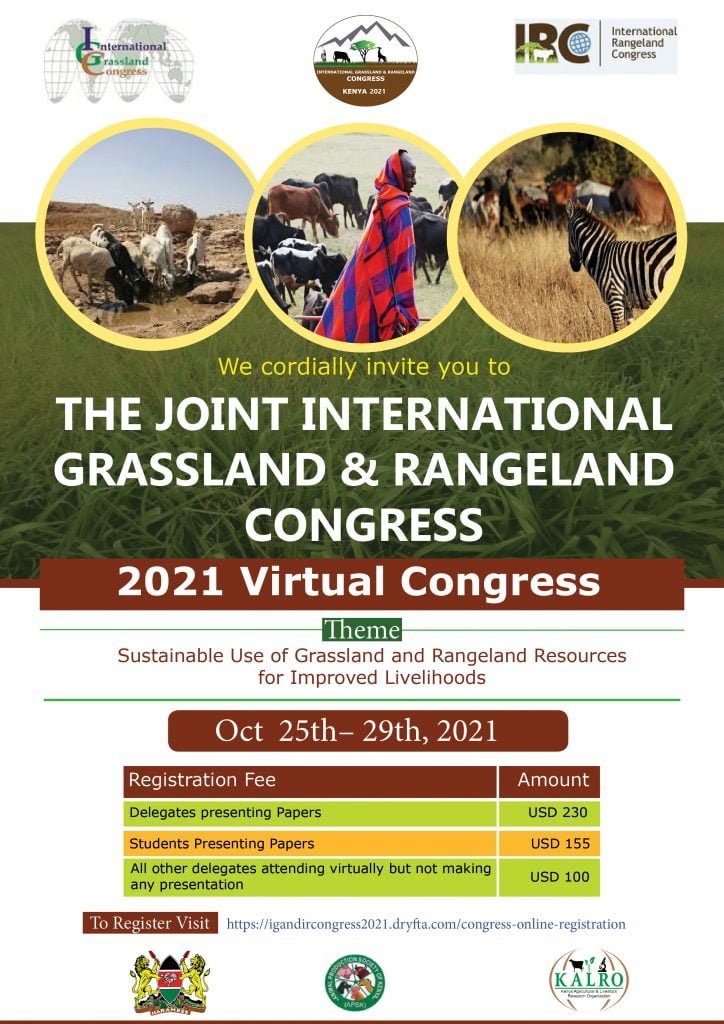
The PS says the Kenyan rangelands, especially the ASALs, are susceptible to these changes of weather and are characterized by high incidences of poverty and malnutrition requiring frequent relief assistance. The situation has been worsened by the increasing human population and consequent shrinkage of the rangeland resource base and rural-urban migration in search of alternative livelihoods.
Grasslands form the bulk feed for livestock both in the rangelands and the high potential areas. However, there are many changes limiting the contribution of grasses to the productivity of livestock. These include dependence on few grasses species and, overgrazing.
“Livestock and human population are rising in the rangelands and expansion of settled lands is worsening the situation. Livestock to the pastoralists is everything, they are savings and treasures, currency and source of pride. It is their livelihood. To them, therefore, increasing livestock populations means improved livelihoods and therefore advocating for the reduction of livestock population is approached with caution. In this sense, KALRO is working towards the introduction of more adapted and productive grasses and improved livestock such as the Boran and Sahiwal cattle,” says Dr. Eliud Kireger the Director General, KALRO.
The Congress will bring together a wide range of experts with vast research experiences on rangelands and grasslands. They will concretize recommendations on the uses of grassland and rangeland resources to meet the increasing competing demands for livestock, wildlife and commercial/industrial use in a tech world under a changing climate. “We call upon both public and private organizations and individuals to join and participate by registering online,” opines Kimtai
The registration deadline is 30th September 2021.


